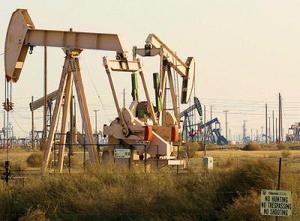Energy independenceU.S. energy situation significantly improved
The rhetoric used to discuss the U.S. energy situation does not reflect the new, and much more favorable, energy reality in which the U.S. now finds itself; the last four years have seen a turnaround in U.S. oil production, which has risen 25 percent since 2008 and could increase by 600,000 barrels per day this year; the U.S. net petroleum imports have fallen from 60 percent of total consumption in 2005 to 42 percent today; in 2011 the United States has seen the largest increase in oil production of any country outside of OPEC; significant increases in oil production in Canada and Brazil have significantly bolstered the position of the Western Hemisphere in the global oil production market shift

Study asserts U.S. energy position is improved // Source: cariereonline.ro
The rhetoric used to discuss the U.S. energy situation does not reflect the new, and much more favorable, energy reality in which the U.S. now finds itself. This is the argument of energy expert Daniel Yergin, chairman of IHS Cambridge Energy Research Associates, is the author of The Quest: Energy, Security, and the Remaking of the Modern World. The other day he offered an eye-opening analysis in the New York Times, and here are the main points:
- America’s oil production has increase by 1.6 million barrels per day since 2008
- Only four years ago the consensus was that the United States would soon spend more than $100 billion a year to import liquefied natural gas from West Africa, the Middle East, even Australia and Russia. The natural gas market in the United States, however, has been transformed by the rapid expansion of shale gas production. A decade ago or so, shale gas amounted to only about 2 percent of U.S. production. Today, it is 37 percent and rising.
- The same arguments were made about oil: the United States, facing global moil scarcity and grown demand for oil, would import more and more oil and higher and higher prices. In fact, the opposite has happened. The U.S. net petroleum imports have fallen from 60 percent of total consumption in 2005 to 42 percent today. Part of the reason is reduced demand, which is the result of improving gasoline efficiency of cars. Improving engine efficiency even more will lead to further reduction in oil demand by at least a couple of million barrels per day.
- The last four years have seen a turnaround in U.S. oil production, which has risen 25 percent since 2008. It could increase by 600,000 barrels per day this year. The major reason has been the increase of production of what industry calls “tight oil,” that is, oil produced from tight rock formations (this is the same technology used to produce shale gas).
- The fact that oil can now be recovered from different geological formation has changed the economic geography of oil. North Dakota has never been regarded as an oil-patch territory, and yet, the state overtook California as the U.S. third largest oil-producing state — and it has just overtaken Alaska, to become No. 2 oil producing state in the United States after Texas.
- Tight oil production may well reach more than four million barrels per day by 2020.
- In 2011 the United States has seen the largest increase in oil production of any country outside of OPEC.
- There has been a significant increase in oil production not only in the United States, but in the Western Hemisphere: the output of Canadian oil sands has tripled since 2000 and is now greater than Libya’s output before its civil war began in February 2011.
- Brazil is developing its vast offshore reserves and could become one of the world’s powerhouses in terms of oil production, far overshadowing its impressive output of ethanol.
Yergin writes: “The results of this hemispheric upsurge will have far-reaching consequences — nothing less than a rebalancing of world oil. Much less oil will come from the Eastern Hemisphere to the Western Hemisphere, and much more Middle Eastern oil will flow to Asia. As it is, China already imports more oil from the Persian Gulf than the United States does.”
The changing reality of U.S., and Western Hemisphere, oil production has at least three results:
- Energy production in the United States is now no longer viewed in terms of energy, but is rather looked at as a source of employment and an engine for economic growth.
- Lower energy costs are also providing a big boost to the revival of manufacturing in the United States and bolsters the competitive position of American industries in the global economy. One example: both U.S. and European petrochemical companies, are coming back to the United States, bringing billions of dollars of new investment with them, and thousands and thousands of new jobs.
- It has never been the case before, but it is now: the U.S. oil production now is in a position to affect world oil prices. As the United States and its allies contemplate economic and political moves against oil producers such as Iran, this new reality strengthens the U.S. position.
